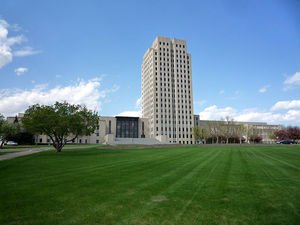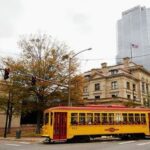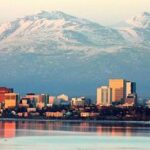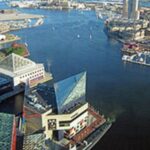This article, the thirty-fourth in a 50-state series, lists the twenty largest cities in North Dakota by population size and provides demographic details for each city: total population, population by age group, racial composition of the population, land area, and population density. For purposes of this article, cities are incorporated municipalities and census-designated places (CDPs).
After reading “Largest Cities in North Dakota (2011),” return to this link to read “Best Places to Live in North Dakota (2011).”
Similar articles for the remaining 49 states can be found at these links: Alabama, Alaska, Arizona, Arkansas, California, Colorado, Connecticut, Delaware, Florida, Georgia, Hawaii, Idaho, Illinois, Indiana, Iowa, Kansas, Kentucky, Louisiana, Maine, Maryland, Massachusetts, Michigan, Minnesota, Mississippi, Missouri, Montana, Nebraska, Nevada, New Hampshire, New Jersey, New Mexico, New York, North Carolina, Ohio, Oklahoma, Oregon, Pennsylvania, Rhode Island, South Carolina, South Dakota, Tennessee, Texas, Utah, Vermont, Virginia, Washington, West Virginia, Wisconsin, and Wyoming.
1. Largest Cities in North Dakota (2011): Fargo, ND
Located in southeastern North Dakota, Fargo is the largest city in the state with an estimated population of 105,549.
A comparatively large part of the population is college-aged: the city is home to North Dakota State University. Grouped by age, 19.4% of the population is under 18, 19.8% is 18 to 24, 29.0% is 25 to 44, 21.7% is 45 to 64, and 10.1% is 65 or older. The median age of the population is 30.2.
The racial composition of the city is 90.2% White, 2.7% Black or African American, 1.4% Native American, 3.0% Asian, 0.6% from other races, and 2.1% from two or more races. The population is 2.2% Hispanic or Latino of any race.
The land area of the city is 37.9 square miles. The city’s population density is 2,785 people per square mile.
2. Largest Cities in North Dakota (2011): Bismarck, ND
Situated in the central part of southern North Dakota, Bismarck is the state’s capital and second largest city with an estimated population of 61,272.
Classified by age, 20.8% of the population is under 18, 10.8% is 18 to 24, 26.2% is 25 to 44, 26.8% is 45 to 64, and 15.4% is 65 or older. The median age of the population is 38.0.
The racial complexion of the city is 92.4% White, 0.7% Black or African American, 4.5% Native American, 0.6% Asian, 0.3% from other races, and 1.5% from two or more races. The population is 1.3% Hispanic or Latino of any race.
The land area of the city is 26.9 square miles. The city’s population density is 2,278 people per square mile.
3. Largest Cities in North Dakota (2011): Grand Forks, ND
Located in northeastern North Dakota, Grand Forks is the third largest city in the state with an estimated population of 52,838.
An unusually large part of the population is college-aged: the city in home to the University of North Dakota. Categorized by age, 18.4% of the population is under 18, 24.7% is 18 to 24, 25.1% is 25 to 44, 21.7% is 45 to 64, and 10.1% is 65 or older. The median age of the population is 28.4.
The racial profile of the city is 89.7% White, 2.0% Black or African American, 2.9% Native American, 2.2% Asian, 0.7% from other races, and 2.5% from two or more races. The population is 2.8% Hispanic or Latino of any race.
The land area of the city is 19.2 square miles. The city’s population density is 2,752 people per square mile.
4. Largest Cities in North Dakota (2011): Minot, ND
Situated in the northwestern part of central North Dakota, Minot is the fourth largest city in the state with an estimated population of 40,888.
Sorted by age, 21.1% of the population is under 18, 14.0% is 18 to 24, 26.7% is 25 to 44, 23.2% is 45 to 64, and 15.0% is 65 or older. The median age of the population is 33.8.
The racial makeup of the city is 90.2% White, 2.3% Black or African American, 3.2% Native American, 0.9% Asian, 0.1% Pacific Islander, 0.6% from other races, and 2.7% from two or more races. The population is 2.7% Hispanic or Latino of any race.
The land area of the city is 14.6 square miles. The city’s population density is 2,801 people per square mile.
5. Largest Cities in North Dakota (2011): West Fargo, ND
Located in southeastern North Dakota, West Fargo is the fifth largest city in the state with an estimated population of 25,830.
Arranged by age, 26.9% of the population is under 18, 9.3% is 18 to 24, 32.9% is 25 to 44, 23.2% is 45 to 64, and 7.7% is 65 or older. The median age of the population is 32.6.
The racial mix of the city is 93.5% White, 2.0% Black or African American, 1.0% Native American, 1.4% Asian, 0.4% from other races, and 1.8% from two or more races. The population is 1.8% Hispanic or Latino of any race.
The land area of the city is 7.3 square miles. The city’s population density is 3,538 people per square mile.
6. Largest Cities in North Dakota (2011): Mandan, ND
Located in southern North Dakota, Mandan is the sixth largest city in the state with an estimated population of 18,331.
Grouped by age, 23.9% of the population is under 18, 8.5% is 18 to 24, 27.3% is 25 to 44, 27.2% is 45 to 64, and 13.1% is 65 or older. The median age of the population is 37.2.
The racial composition of the city is 91.7% White, 0.6% Black or African American, 4.9% Native American, 0.2% Asian, 0.1% Pacific Islander, 0.5% from other races, and 2.0% from two or more races. The population is 1.8% Hispanic or Latino of any race.
The land area of the city is 10.2 square miles. The city’s population density is 1,797 people per square mile.
7. Largest Cities in North Dakota (2011): Dickinson, ND
Situated in southwestern North Dakota, Dickinson is the seventh largest city in the state with an estimated population of 17,787.
Classified by age, 21.0% of the population is under 18, 14.0% is 18 to 24, 24.6% is 25 to 44, 24.3% is 45 to 64, and 16.1% is 65 or older. The median age of the population is 35.6.
The racial complexion of the city is 94.2% White, 1.0% Black or African American, 1.2% Native American, 1.5% Asian, 0.1% Pacific Islander, 0.6% from other races, and 1.5% from two or more races. The population is 2.1% Hispanic or Latino of any race.
The land area of the city is 9.5 square miles. The city’s population density is 1,872 people per square mile.
8. Largest Cities in North Dakota (2011): Jamestown, ND
Located in the southeastern part of central North Dakota, Jamestown is the eighth largest city in the state with an estimated population of 15,427.
Categorized by age, 19.7% of the population is under 18, 12.0% is 18 to 24, 23.8% is 25 to 44, 27.1% is 45 to 64, and 17.4% is 65 or older. The median age of the population is 39.9.
The racial profile of the city is 94.6% White, 0.8% Black or African American, 1.8% Native American, 0.6% Asian, 0.1% Pacific Islander, 0.7% from other races, and 1.4% from two or more races. The population is 2.1% Hispanic or Latino of any race.
The land area of the city is 12.5 square miles. The city’s population density is 1,234 people per square mile.
9. Largest Cities in North Dakota (2011): Williston, ND
Situated in northwestern North Dakota, Williston is the ninth largest city in the state with an estimated population of 14,716.
Sorted by age, 23.6% of the population is under 18, 10.0% is 18 to 24, 26.7% is 25 to 44, 25.4% is 45 to 64, and 14.3% is 65 or older. The median age of the population is 35.5.
The racial makeup of the city is 92.6% White, 0.3% Black or African American, 3.3% Native American, 0.3% Asian, 0.4% from other races, and 3.0% from two or more races. The population is 2.2% Hispanic or Latino of any race.
The land area of the city is 7.0 square miles. The city’s population density is 2,102 people per square mile.
10. Largest Cities in North Dakota (2011): Wahpeton, ND
Located in southwestern North Dakota, Wahpeton is the tenth largest city in the state with an estimated population of 7,766.
A substantial part of the population is college-aged: the city is home to North Dakota State College of Science. Arranged by age, 20.3% of the population is under 18, 25.6% is 18 to 24, 20.5% is 25 to 44, 21.0% is 45 to 64, and 12.6% is 65 or older. The median age of the population is 31.1.
The racial mix of the city is 92.6% White, 1.3% Black or African American, 3.1% Native American, 0.8% Asian, 0.1% Pacific Islander, 0.3% from other races, and 1.8% from two or more races. The population is 2.0% Hispanic or Latino of any race.
The land area of the city is 5.0 square miles. The city’s population density is 1,553 people per square mile.
11. Largest Cities in North Dakota (2011): Devils Lake, ND
Located in northeastern North Dakota, Devils Lake is the eleventh largest city in the state with an estimated population of 7,141.
Grouped by age, 21.6% of the population is under 18, 10.9% is 18 to 24, 22.3% is 25 to 44, 26.1% is 45 to 64, and 19.1% is 65 or older. The median age of the population is 40.4.
The racial composition of the city is 82.9% White, 0.5% Black or African American, 12.5% Native American, 0.4% Asian, 0.3% from other races, and 3.4% from two or more races. The population is 1.3% Hispanic or Latino of any race.
The land area of the city is 6.3 square miles. The city’s population density is 1,133 people per square mile.
12. Largest Cities in North Dakota (2011): Valley City, ND
Situated in southeastern North Dakota, Valley City is the twelfth largest city in the state with an estimated population of 6,585.
Classified by age, 18.7% of the population is under 18, 13.3% is 18 to 24, 21.1% is 25 to 44, 24.9% is 45 to 64, and 22.0% is 65 or older. The median age of the population is 42.1.
The racial complexion of the city is 95.2% White, 1.2% Black or African American, 0.7% Native American, 0.8% Asian, 0.2% from other races, and 1.7% from two or more races. The population is 1.5% Hispanic or Latino of any race.
The land area of the city is 3.3 square miles. The city’s population density is 1,995 people per square mile.
13. Largest Cities in North Dakota (2011): Minot AFB, ND
Located in northwestern part of central North Dakota, Minot AFB is the thirteenth largest city in the state with an estimated population of 5,521.
Categorized by age, 34.3% of the population is under 18, 32.2% is 18 to 24, 31.6% is 25 to 44, 1.9% is 45 to 64, and 0.0% is 65 or older. The median age of the population is 21.4.
The racial profile of the city is 76.8% White, 9.9% Black or African American, 0.8% Native American, 2.8% Asian, 0.6% Pacific Islander, 2.2% from other races, and 6.8% from two or more races. The population is 9.9% Hispanic or Latino of any race.
The land area of the city is 7.2 square miles. The city’s population density is 767 people per square mile.
14. Largest Cities in North Dakota (2011): Grafton, ND
Situated in northeastern North Dakota, Grafton is the fourteenth largest city in the state with an estimated population of 4,284.
Sorted by age, 23.5% of the population is under 18, 8.2% is 18 to 24, 21.5% is 25 to 44, 27.7% is 45 to 64, and 19.1% is 65 or older. The median age of the population is 42.5.
The racial makeup of the city is 89.2% White, 0.4% Black or African American, 2.8% Native American, 0.4% Asian, 0.1% Pacific Islander, 5.4% from other races, and 1.7% from two or more races. The population is 14.1% Hispanic or Latino of any race.
The land area of the city is 3.4 square miles. The city’s population density is 1,260 people per square mile.
15. Largest Cities in North Dakota (2011): Beulah, ND
Located in the western part of central North Dakota, Beulah is the fifteenth largest city in the state with an estimated population of 3,121.
Arranged by age, 22.3% of the population is under 18, 6.4% is 18 to 24, 22.1% is 25 to 44, 34.3% is 45 to 64, and 14.9% is 65 or older. The median age of the population is 44.2.
The racial mix of the city is 94.8% White, 0.2% Black or African American, 2.3% Native American, 0.3% Asian, 0.3% Pacific Islander, 0.7% from other races, and 1.4% from two or more races. The population is 2.3% Hispanic or Latino of any race.
The land area of the city is 2.4 square miles. The city’s population density is 1,300 people per square mile.
16. Largest Cities in North Dakota (2011): Rugby, ND
Located in the central part of northern North Dakota, Rugby is the sixteenth largest city in the state with an estimated population of 2,876.
Grouped by age, 20.0% of the population is under 18, 6.1% is 18 to 24, 21.1% is 25 to 44, 26.2% is 45 to 64, and 26.6% is 65 or older. The median age of the population is 47.0.
The racial composition of the city is 91.9% White, 0.3% Black or African American, 5.8% Native American, 0.9% from other races, and 1.1% from two or more races. The population is 1.3% Hispanic or Latino of any race.
The land area of the city is 1.9 square miles. The city’s population density is 1,514 people per square mile.
17. Largest Cities in North Dakota (2011): Horace, ND
Situated in southeastern North Dakota, Horace is the seventeenth largest city in the state with an estimated population of 2,430.
Classified by age, 33.4% of the population is under 18, 5.3% is 18 to 24, 29.6% is 25 to 44, 26.9% is 45 to 64, and 4.8% is 65 or older. The median age of the population is 35.6.
The racial complexion of the city is 97.1% White, 0.5% Black or African American, 1.4% Native American, 0.2% Asian, 0.2% from other races, and 0.7% from two or more races. The population is 0.9% Hispanic or Latino of any race.
The land area of the city is 2.2 square miles. The city’s population density is 1,105 people per square mile.
18. Largest Cities in North Dakota (2011): Hazen, ND
Located in the western part of central North Dakota, Hazen is the eighteenth largest city in the state with an estimated population of 2,411.
Categorized by age, 22.6% of the population is under 18, 5.2% is 18 to 24, 21.9% is 25 to 44, 35.8% is 45 to 64, and 14.5% is 65 or older. The median age of the population is 45.2.
The racial profile of the city is 96.6% White, 0.4% Black or African American, 1.8% Native American, 0.3% Asian, 0.1% Pacific Islander, 0.3% from other races, and 0.6% from two or more races. The population is 1.2% Hispanic or Latino of any race.
The land area of the city is 1.2 square miles. The city’s population density is 2,009 people per square mile.
19. Largest Cities in North Dakota (2011): Lincoln, ND
Situated in southern North Dakota, Lincoln is the nineteenth largest city in the state with an estimated population of 2,406.
Sorted by age, 32.0% of the population is under 18, 8.4% is 18 to 24, 35.9% is 25 to 44, 20.0% is 45 to 64, and 3.7% is 65 or older. The median age of the population is 29.6.
The racial makeup of the city is 94.6% White, 0.9% Black or African American, 2.0% Native American, 0.1% Asian, 0.1% from other races, and 2.2% from two or more races. The population is 0.5% Hispanic or Latino of any race.
The land area of the city is 1.0 square miles. The city’s population density is 2,406 people per square mile.
20. Largest Cities in North Dakota (2011): Grand Forks AFB, ND
Located in eastern North Dakota, Grand Forks AFB is the twentieth largest city in the state with an estimated population of 2,367.
Arranged by age, 36.6% of the population is under 18, 27.9% is 18 to 24, 33.0% is 25 to 44, 2.5% is 45 to 64, and 0.0% is 65 or older. The median age of the population is 21.7.
The racial mix of the city is 77.1% White, 10.2% Black or African American, 0.5% Native American, 2.8% Asian, 0.7% Pacific Islander, 2.9% from other races, and 5.8% from two or more races. The population is 10.0% Hispanic or Latino of any race.
The land area of the city is 8.2 square miles. The city’s population density is 289 people per square mile.
Source(s):
“American Fact Finder,” U.S. Census Bureau
“Population, Housing Units, Area, and Density: 2000,” U.S. Census Bureau







